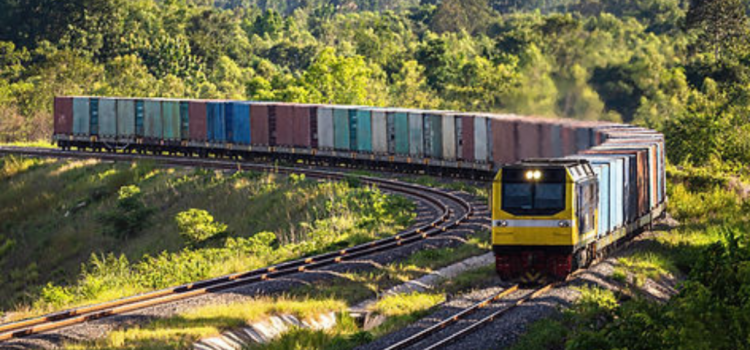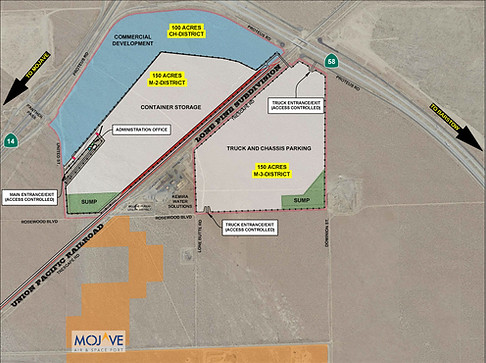
The Mojave Inland Port will create 3,000 new jobs in Kern County with almost $230 million in labor income. This will generate over $500 million in annual economic impact for California and $80 million in tax revenues.
An inland port is an extension of seaports that will help speed up the process of transporting goods from large businesses.
Since the COVID-19 pandemic began, the supply chain has become very impacted and overran with shipping containers in both Los Angeles and Long Beach ports.
More than 40 percent of the Los Angeles and Long Beach ports come from Asia, and the containers have been backed up due to the lack of available land and the high traffic that trucks need to navigate. This causes businesses to be forced to delay goods.
“The biggest problem is that the ports are out of land. They have no place to store these containers,” said Morgan Hill of Pioneer Partners. “We are going to offer them the land that they do not have, so instead of storing those containers on the land they will transport them to Mojave and we will take care of it.”
The Los Angeles and Long Beach ports process more than 20 million Twenty-Foot Equivalent Units (TEU) per year. This number is expected to increase by 2030 to 34 million TEUs per year. Those ports do 40 percent of the business from the pacific alone and 35 percent of all imports in the United States.
The Mojave Inland Port stated that large distributions and retail companies like Amazon, Costco, Walmart, IKEA, Home Depot, and Lows will be offloaded from ships onto shuttle trains. The trains will go directly to the Mojave Inland Port. At which time, they will be immediately offloaded onto tracker trailers and carried to the ultimate destination.
The Mojave Inland Port will benefit in many ways from reducing shipping costs which will moderate inflation, and it will remove thousands of trucks from the 710 Corridor which will reduce emissions.
“Our target is 2.6 million TEUs per year, maybe pushing up to 3 million. We want to process them, but we do not want to store them. If those containers hit the ground, we are not doing what we want to do. Ultimately, we may have to have warehouses and there may be some times where these containers hit the ground, but if we are doing our job the way we envision it, those containers will never touch the ground. They go from train to truck to the ultimate destination,” said Hill.
Hills stated that this has been a dream since they applied for the project back in 2000 when they acquired the land in Mojave. Shortly after they applied for the property, the State of California decided to put in the highway 55 bypass making them the best location for this project.
“We are very excited about this. We have support in Washington, Sacramento, Kern County, Los Angeles, and support from other members of this supply issue,” said Hill.
The Mojave Inland Port is a project funded by private investment; therefore, it is not dependent on public money. Mojave is the best location for this project because it is adjacent to a 24/7 airport with a 12,500-foot heavy-lift aircraft runway, it is served by two major highways, and it is 402 acres of land.
The Mojave Inland Port is set to break ground in 2023 and be fully operational by 2024. This port is set to decongest the ports in Los Angeles and Long Beach to bring relief to an overburdened supply chain.
